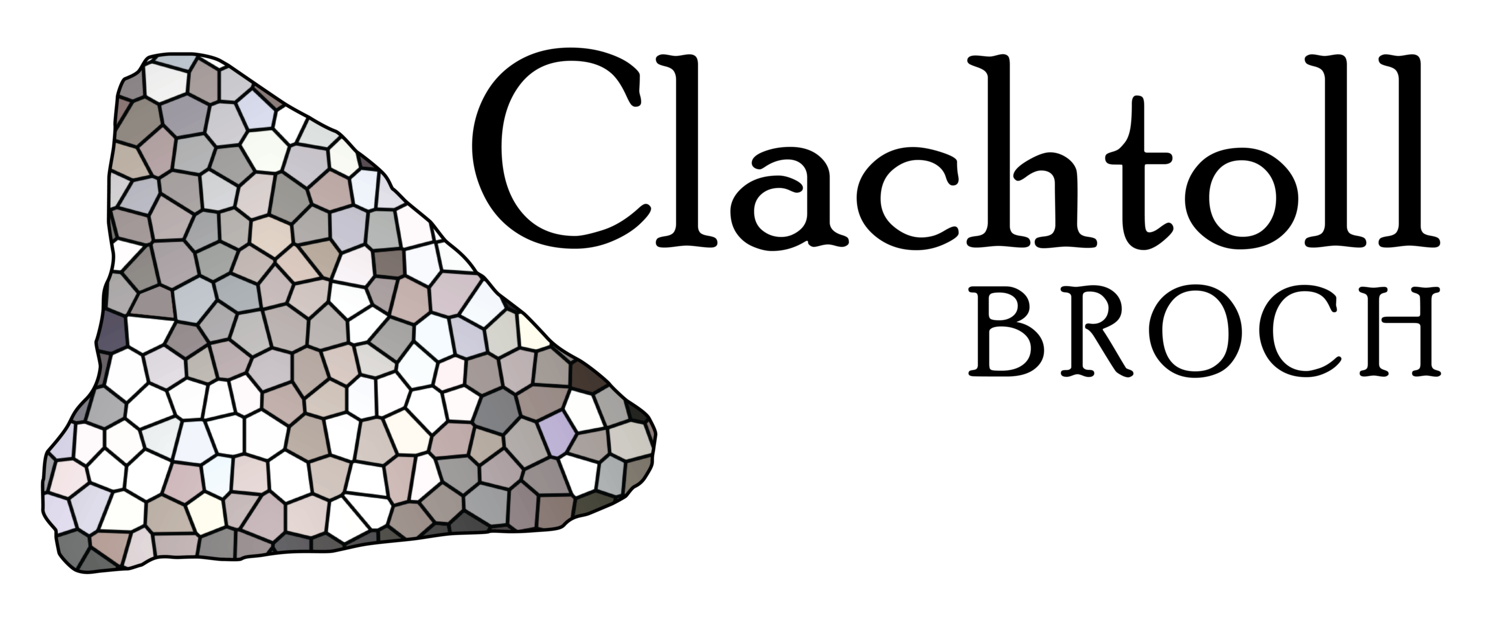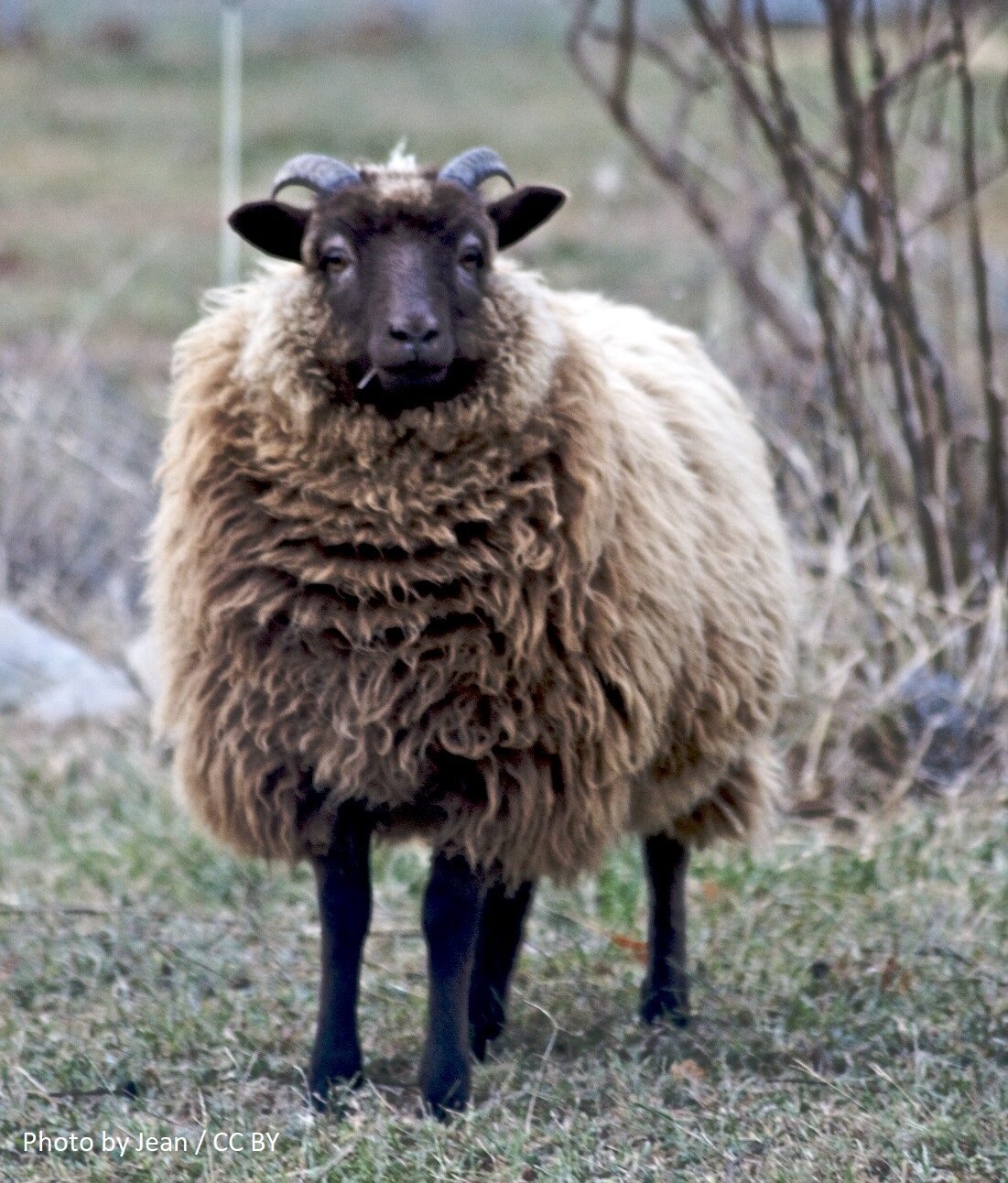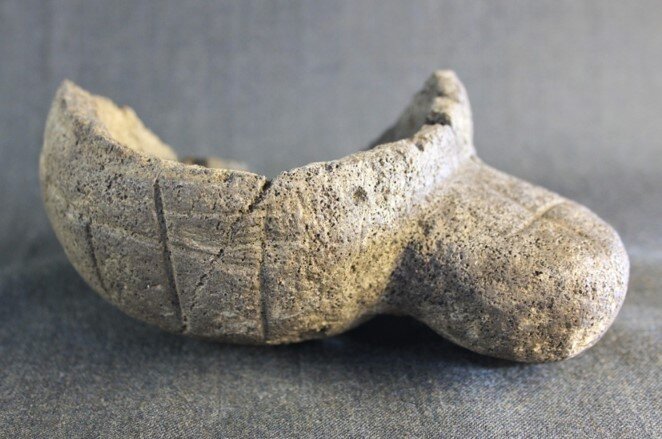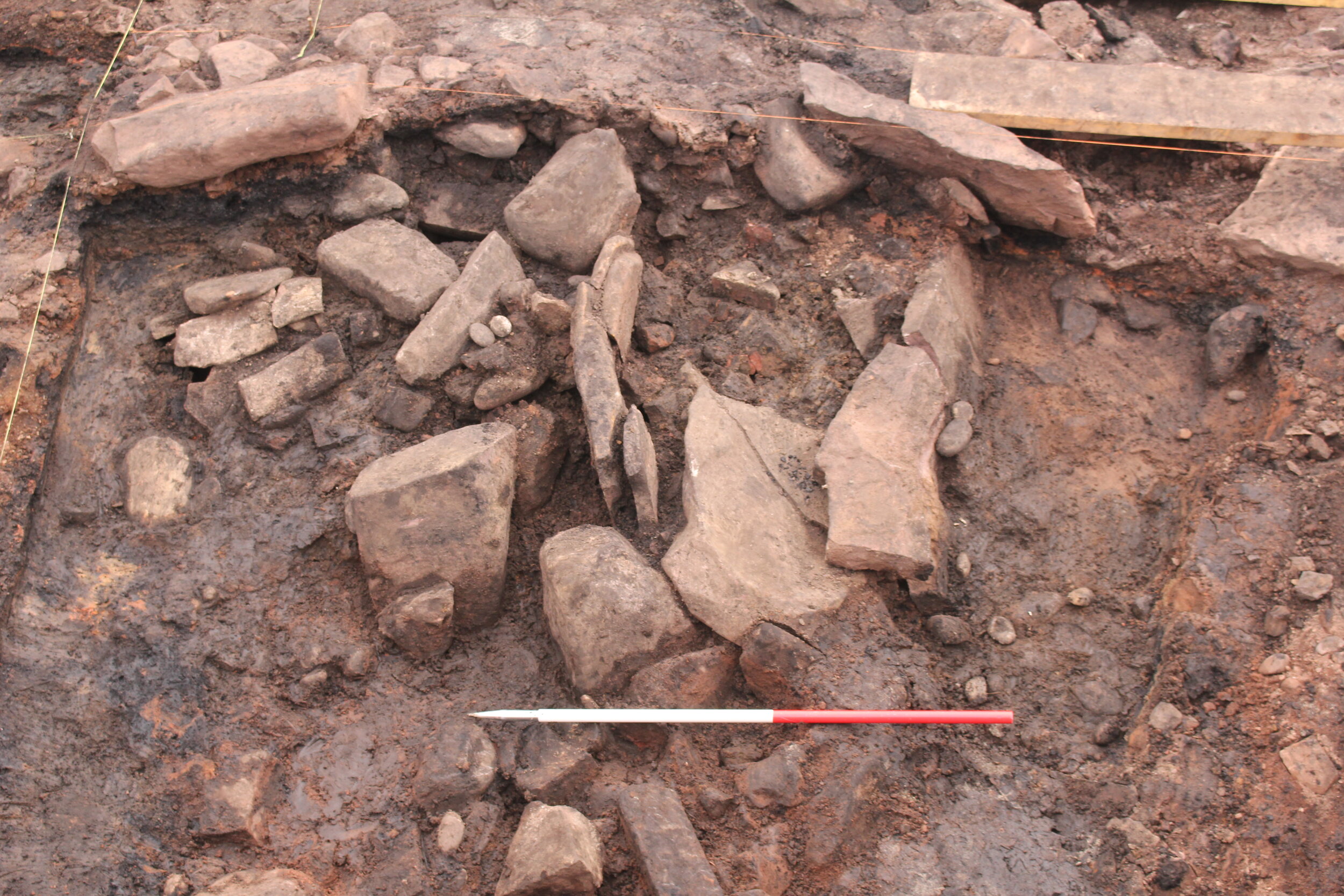
Farming, fishing, foraging
For a varied diet in the Iron Age
The people of the broch were farmers first and foremost, growing crops and rearing animals to produce the foods and resources that they needed. They supplemented their yield with fish and other marine resources as well as foraged foods such as berries.
We know this because of the animal bone, shells and microscopic plant remains recovered during excavation of the broch. But the true story was probably much fuller, the diet more varied. The analysis from the broch only shows us what survives. There will have been other plants, other animals that were exploited – we just don’t see the evidence in the archaeological record. Similarly, the evidence we have for food preparation practices is only a snapshot. It is clear, however, that the diet in Iron Age Assynt was varied and nutritious, changing with the seasons and making the most of what was available.
Farming
The broch was home to a farming family. They reared cattle, sheep, possibly goats, and a few pigs. The cattle and sheep/goats provided milk which was used to make butter and cheese. The animals were kept until they reached their full size, grazing nearby and, in the winter, eating fodder grown on the farm and seaweed gathered from the shore. Once they had reached optimum size, they were slaughtered for their meat. Beef and lamb/mutton formed a much larger part of their diet than pork.
The primary arable crop grown by the people of the broch was hulled barley. Hulled barley, unlike naked barley, has a tough husk that needs to be removed before the grain can be cooked or ground for flour. Numerous quernstones attest to the grinding of grain at the broch.
Small amounts of flax were present among the cereal grains. While flax cultivation has many potential purposes including producing linseed oil and linen, the evidence from the broch suggests that it was most likely eaten.
During the earliest occupation of the broch, the community seems to have practised a small-scale subsistence economy. This may have changed over time. By the final phase of occupation, the broch might have been become the focal point for the processing and storage of large quantities of grain, perhaps drawing in resources from the wider farming landscape.
One of the disadvantages of storing large quantities of crops and processing them in bulk in a single enclosed location is the increased probability of fire because the grain must be routinely parched (dried). If we were to speculate, we might suggest that storing and processing large amounts of grain may have contributed to the burning event that marked the end of the broch’s life.
Bounty of the Sea and Shore
While the people of the broch grew or reared a significant proportion of their food, they also looked to the sea to supplement their diet. They fished either from the shore or from small boats, catching mostly saithe and pollack. Freshwater fish such as salmon were also available from nearby rivers and lochs. They may have smoked the fish, hanging them above the hearth in the broch to preserve them so that they could be set aside for the winter and early spring, when food stores were running low. Limpets and periwinkles were gathered from the shore.
The sea, however, yielded much larger bounty too. Seals are easily caught when they come ashore to moult in the spring, or to have their pups in the autumn. Their pelts were valuable, as well as their blubber, meat, sinews and blood.
Larger still, whales formed part of the economy at Clachtoll. They may have been hunted from small boats, or the people of the broch may have taken advantage of creatures that had become beached, or carcasses that washed ashore. The whale carcass was butchered on the shore, with meat, bone and blubber being carried away home. Blubber could be turned into oil for lamps – a practice that continued here well into the 19th century. Bone was useful for making objects such as the whalebone vertebra that was used as a working surface at the broch.
Nature’s Harvest
Small amounts of red deer bone show that venison was on the menu too, but perhaps only occasionally. Hunting deer doesn’t seem to have been a priority for the community at Clachtoll.
Hazelnuts, crowberries and sloes were foraged from the landscape around the broch. Species that we consider to be weeds - fat hen, chickweed and hemp nettle, for example - may also have been gathered and used in cooking. Perhaps they were used to add flavour to cereal pottage.
Evidence of beeswax was identified, suggesting that honey may have added sweetness to the diet at Clachtoll.
Venison was eaten at the broch only occasionally - a rare treat, perhaps
Sloes have a sharp flavour, but they may have been favoured for their medicinal properties
Honeycomb was collected from wild honeybees
Food Preparation and Cooking
The massive central hearth at the broch was quite literally the heart of the home. Food was cooked around the edges of the fire, in ceramic pots, on hot, flat stones or in iron vessels such as cauldrons, although no evidence of the latter was found at Clachtoll. Small stones were heated and dropped into soups and stews to raise the temperature of the food. Plenty of these “pot boilers” were discovered at the broch. Food could also be roasted in the embers of the fire – hazelnuts were perhaps prepared in this way – or cooked on spits close to the flames.
Food was prepared in stone and ceramic bowls and pots. Analysis of residues on a selection of these vessels showed that some were used for preparing only dairy products (milk, butter or cheese). Others were more multi-purpose, being used to process mainly dairy products but also marine resources such as fish, and leafy plants. Beeswax was identified on one of the vessels – was it used to store honeycomb? Or was the wax used to seal and preserve a foodstuff, in the same way that we used a layer of fat to preserve paté, for example? Wooden vessels and utensils were probably used too, and perhaps even leather vessels.
Set into the floor of the broch is a knocking stone…
… a large stone with a deep recess in its upper surface. It was used for processing grain before consumption. It was full to the brim with grain when it was discovered - thousands of grains of barley, carbonised and perfectly preserved.
A stone setting forming a box or tank may have been used in food preparation
Other examples have been found with traces of clay linings which would have made the box watertight. No clay was identified within the tank at Clachtoll, but perhaps animals skins served a similar purpose. At any rate, the feature was filled with heat-cracked stones, animal bone and shell, making it highly likely that it was used in food preparation or cooking.










